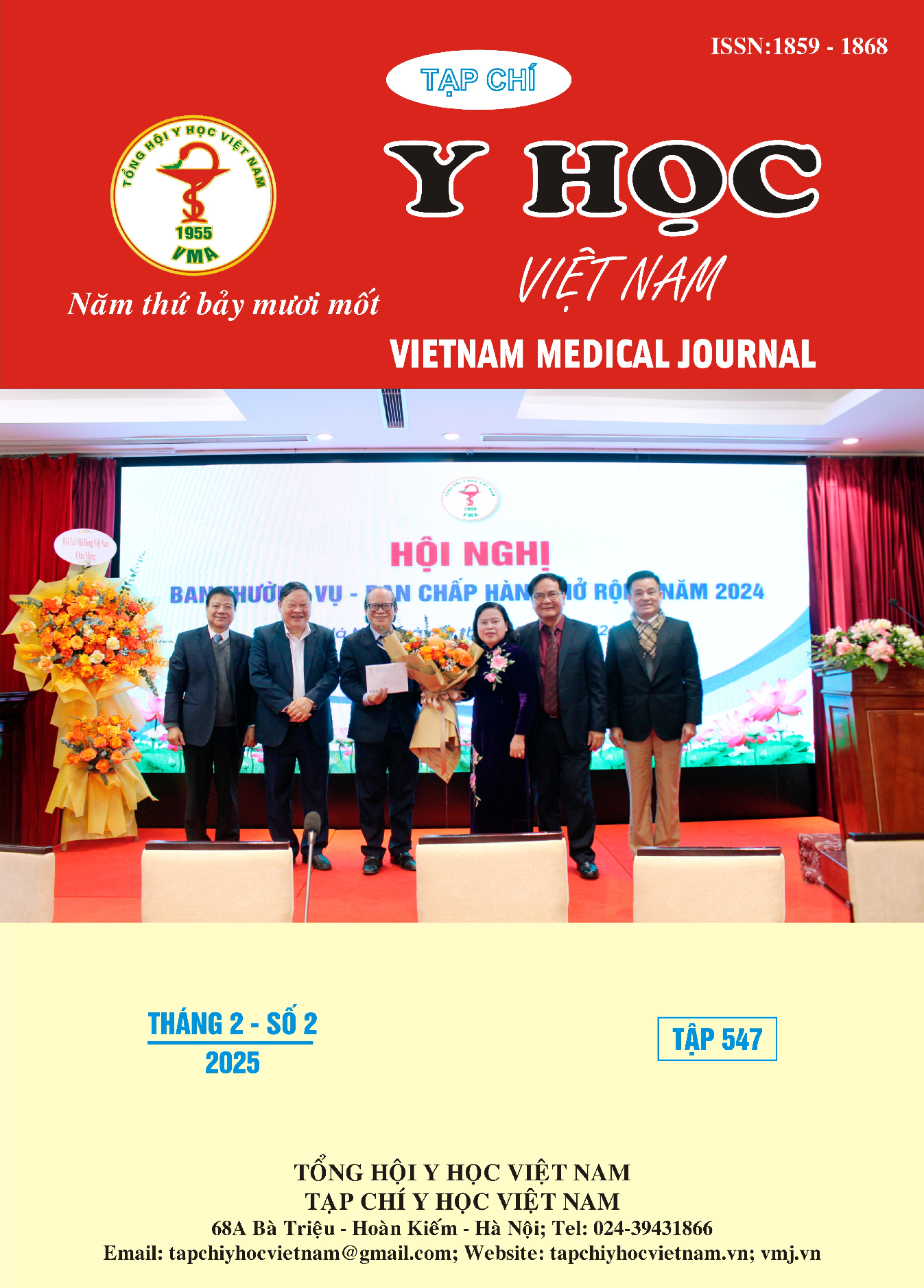RESULTS OF BALLOON KYPHOPLASTY IN PATIENTS WITH THORACIC VERTEBRAL COMPRESSION FRACTURES DUE TO OSTEOPOROTIC AT VIET DUC HOSPITAL
Main Article Content
Abstract
Objective: To evaluate the outcomes of balloon kyphoplasty for patients with osteoporotic thoracic vertebral compression fractures at Viet Duc University Hospital. Methods: A retrospective descriptive study of 87 patients with osteoporotic thoracic vertebral compression fractures who underwent vertebral body augmentation with balloon-assisted bone cement injection at Viet Duc Hospital from January 2021 to January 2023. Results: Among the 87 patients in our study, the majority were female (67.8%), with an average age of 63.2 ± 10.1 years. On X-ray, most patients had a single vertebral injury (86.2%). The average T-score was -3.7 ± 0.4. On MRI, all patients (100%) showed vertebral body edema, 2.0% had posterior ligamentous complex (PLC) injuries, and 18.2% presented signal alterations (low signal on T1W and high signal on T2W). Surgical Technique Characteristics: In 72.7% of cases, the needle was inserted transpedicularly, and 87.9% of cases involved bilateral needle insertion, with an average cement volume of 4.0 ± 1.2ml. Surgical Complications: 4.6% of patients experienced intercostal neuralgia, and 27.6% had cement leakage near the vertebrae, but no patients had severe complications. Postoperative Clinical Outcomes: Patients’ VAS scores significantly decreased compared to preoperative levels at 24 hours, 1 month, and 12 months post-surgery, with P < 0.001. MacNab scores were predominantly in the very good and good categories postoperatively, with no patients in the poor category. Conclusion: Balloon kyphoplasty for patients with osteoporotic thoracic vertebral compression fractures provides significant clinical benefits, is a safe method, and helps restore vertebral height while reducing the rate of cement leakage complications.
Article Details
Keywords
Thoracic vertebral compression, osteoporosis, balloon kyphoplasty
References
2. Kendler DL, Bauer DC, Davison KS, et al. Vertebral Fractures: Clinical Importance and Management. The American Journal of Medicine. 2016;129(2):221.e1-221.e10.
3. Baaj AA, Downes K, Vaccaro AR, Uribe JS, Vale FL. Trends in the treatment of lumbar spine fractures in the United States: a socioeconomics perspective: clinical article. J Neurosurg Spine. 2011;15(4):367-370.
4. Jo DJ, Kim YS, Kim SM, Kim KT, Seo EM. Clinical and radiological outcomes of modified posterior closing wedge osteotomy for the treatment of posttraumatic thoracolumbar kyphosis. J Neurosurg Spine. 2015;23(4):510-517.
5. Munting E. Surgical treatment of post-traumatic kyphosis in the thoracolumbar spine: indications and technical aspects. Eur Spine J. 2010;19 Suppl 1:S69-73.
6. Dinh-Hoa Nguyen et al. Safety of balloon kyphoplasty in the treatment of thoracic osteoporotic vertebral compression fractures in Vietnamese patients. Clin Orthop Surg. 2020 Jun;12(2):209-216.
7. Boszczyk BM, Bierschneider M, Hauck S, Beisse R, Potulski M, Jaksche H. Transcostovertebral kyphoplasty of the mid and high thoracic spine. Eur Spine J 2005;14(10):992–999.
8. Ge J, Cheng X, Li P, Yang H, Zou J. The clinical effect of kyphoplasty using the extrapedicular approach in the treatment of thoracic osteoporotic vertebral compression fracture. World Neurosurg 2019;131:e284–e289.
9. Hulme PA, Krebs J, Ferguson SJ, Berlemann U. Vertebroplasty and kyphoplasty: a systematic review of 69 clinical studies. Spine (Phila Pa 1976) 2006;31(17):1983–2001.
10. Robinson Y, Tschoke SK, Stahel PF, Kayser R, Heyde CE. Complications and safety aspects of kyphoplasty for osteoporotic vertebral fractures: a prospective follow-up study in 102 consecutive patients. Patient Saf Surg 2008;2:2


